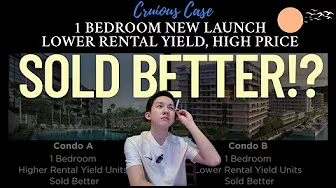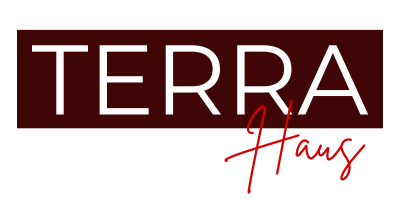- Home
- Property Insights
-
New Property Launch
- Success Stories
- Property FAQs
One bedroom new launch with lower rental, high price. Yet sold well in resale market !?
Jay Peck
Last Updated on 05-May-2025

Introduction
When people think of buying a one-bedroom unit, it's usually with investment in mind. That means factors like entry price and rental yield are key—because they determine how easy it is to eventually sell the unit to the next buyer.
But what if that's not always the case? What if you pick a unit with higher rental yield, only to find it harder to sell, with lower profit in the end?
Hi everyone, I’m Jay. In this article, I’ll break down two real-life condo case studies. One condo performed better with higher rental yield units, while the other defied logic—its lower rental yield units actually sold better and at a premium.
Sounds strange? Read on to avoid making the same costly mistakes.
Condo A vs Condo B – An Overview
Let’s compare Condo A and Condo B, both located in the RCR (Rest of Central Region).
- Condo A: Higher rental yield units performed well in both rental and resale markets.
- Condo B: Surprisingly, the lower rental yield units sold better, and at significantly higher prices.
Condo A – Strong Investment Potential
- Completion Year: 2023
- Total Units: ~500
- Land Size: ~300,000 sqft
Unit Types:
- 1-Bedroom: 474 sqft
- 1+Study: 517 sqft
Rental Performance:
- 1-Bedroom: ~$3,500/month
- 1+Study: ~$3,600/month
The difference in rent is only $100/month, despite a price difference of ~$75,250 (based on $1,750 PSF). Let’s do the math: $75,250 ÷ $100 ÷ 12 months = 62.7 years. That’s how long it would take to "recover" the price difference via rental gains.
Resale Market Observation:
- 1-Bedroom units appreciated more in price than 1+Study units.
- PSF prices for 1+Study were generally lower.
- 1-Bedroom units offered better overall returns.
Conclusion for Condo A: The smaller, more affordable 1-bedroom units were better for investment due to their stronger rental yield and higher resale appreciation.
Condo B – A Surprise Twist
Project Overview
- Completion Year: 2024
- Total Units: ~400
- Land Size: ~300,000 sqft (similar to Condo A)
Unit Types
- 431 sqft (no balcony)
- 484 sqft
- 538 sqft (triangle-shaped balcony)
- 592 sqft
Despite varying layouts and sizes, rental rates across these units were fairly similar—only about $100–$150/month difference.
Price Points (Asking)
- Highway-facing units:
- 431–484 sqft: $1.09M–$1.18M
- Non-highway facing units (better facing but west sun):
- Same sizes: $1.28M–$1.35M
- Larger units (538 sqft+):
- Asking over $1.46M
Actual Sales
- Some non-highway facing units sold for $1.545M and above.
- None of the cheaper highway-facing units sold, even though they were over $300,000 cheaper!
Striking Insight
Despite having lower rental yields, the larger, better-facing one-bedroom units were easier to sell and sold at higher prices.
In fact, the bigger the unit, the higher the per square foot (PSF) price.
So, What’s the Takeaway?
Condo A is clearly a rental-driven investment property. Buyers there valued lower price and higher rental yield.
Condo B, though similar in age and size, attracted owner-occupiers, who prioritized layout, facing, and livability over rental returns.
That’s why you can’t apply the same investment logic to every condo. Each project has its unique buyer demographics and market behavior.
Final Thoughts
Before you jump into what seems like a "cheaper" or "higher-yield" investment, ask:
Is this condo more popular with investors or homeowners?
Are buyers here looking for value, or for comfort and quality?
Misreading the buyer profile could mean ending up with a unit that’s hard to sell—or less profitable in the long run.
Always analyze each project on its own merits and work with someone who understands these nuances. A well-informed advisor can help you avoid expensive mistakes and make smarter decisions.


